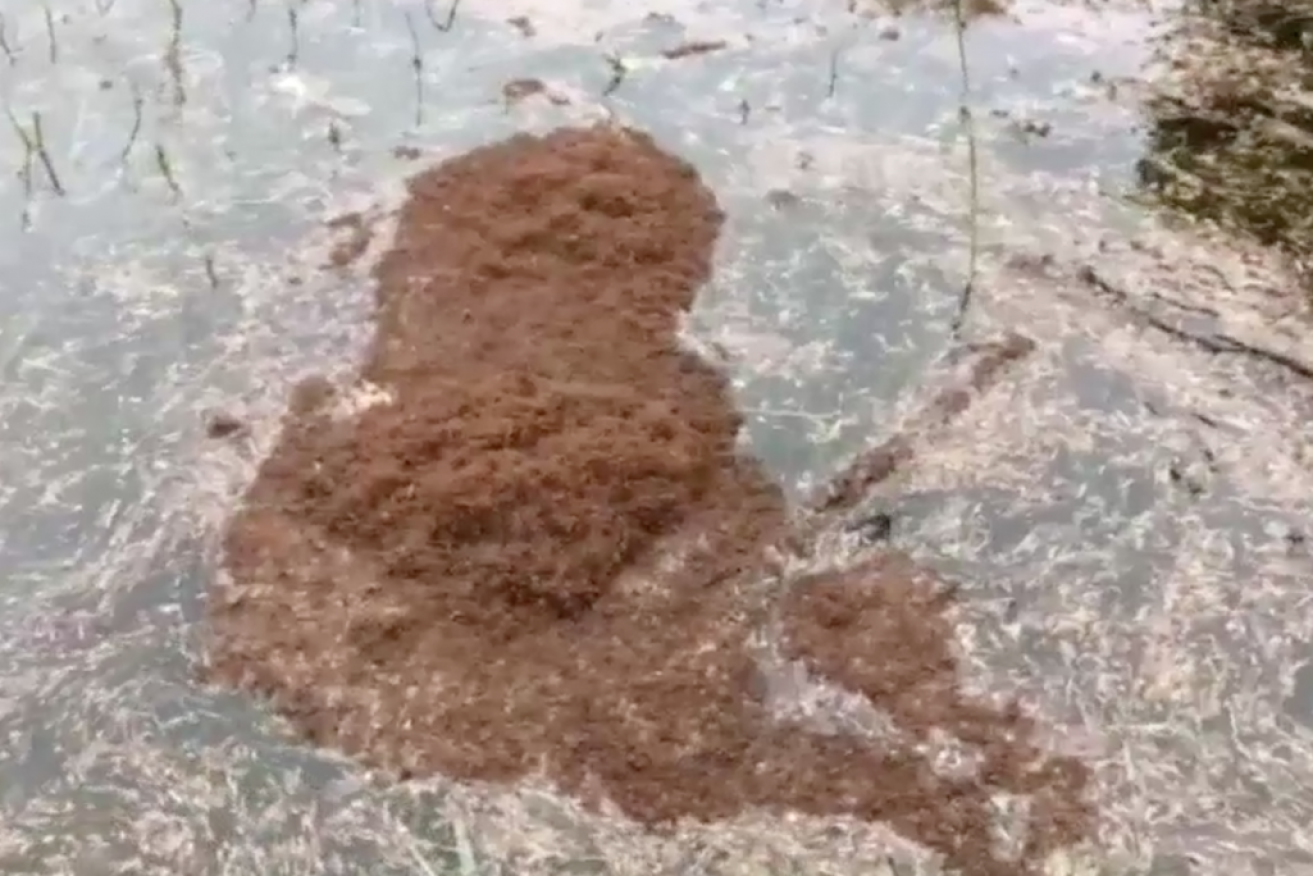Texas flood full of fire ants – could it happen in Australia?

Fire ants float on Houston floodwaters.
If you needed another reason not to enter floodwaters, this is a good one.
Fire ants inundated by Tropical Storm Harvey’s floodwaters in Texas have latched together to form a living, floating life raft to survive.
And, according to one expert, it could happen in Australia too.
How do they float?
All insects have a water-repellent waxy layer over the surface of their exoskeleton, as well as water-repellent hairs on the surface of their body, said Jonathan Majer, adjunct professor at Curtin University and the University of Western Australia.
Professor Majer, who has studied ants for almost 50 years, said these hairs “trap” air on the surface of the insect, allowing them to float.
“Ants, like most insects, breath through pores along the side of their body – not their mouth – so the trapped air around the body allows oxygen to enter the [pores] and allow the ant to breath,” he said.
Meanwhile, in Cuero, the river has brought my aunt all of the fire ants. Yes, those are all (of the) fire ants. pic.twitter.com/dEibWYxAdl
— Bill O'Zimmerman (@The_Reliant) August 29, 2017
“Incidentally, the reason some aquatic insects appear silvery when under water is due to the air trapped between their hairs on the surface of the body.”
Professor Majer said the raft behaviour was likely due to the fire ant evolving to adapt to flooding because heavy rainfall regularly causes inundation in sub-tropical South America, where the species is from.
What about the ants underneath?
You might think the ants on the underside of the raft would be at risk of drowning, but Professor Majer said that was not the case.
“The ants are so light and, collectively, so buoyant, that the lower ones would not be pushed deep into the water – in any case, the trapped air around their body would allow them to breath,” he said.
Are fire ants a risk to people who enter floodwaters?
In a word, yes.
“The ants are just as likely to sting when floating as on land; more so, in fact, as they are likely to be in a hyperactive state,” Professor Majer said. “In addition, if the raft contacted a human body, [they] may mistake it for dry land and walk onto it.”
Could we see this in Australia?
Professor Majer said although he had never observed a fire ant raft in Australia, it was possible – and could be problematic given efforts to control the spread of the ants.
“I am not aware of rafts, but regularly hear of individual ants on the surface of the water [during flooding],” he said.
“Many of our ants simply ‘sit it out’ in air pockets within their nest until water levels drop, however, it is possible that species with large population sizes could form rafts.”
In Australia, there are fire ant populations in and around Brisbane, and recently populations have been found and eradicated in the Port of Gladstone in Queensland, and Port Botany in New South Wales.
“Programs are in place to contain the outbreak, although they continue to be a threat,” Professor Majer said.
“The ant has the potential to spread throughout much of Australia if its invasion is not contained.
“This raft formation could be a problem in Australia as the raft of fire ants could be swept away over long distances and encourage the dispersal of this ant into new areas,” he said.
-ABC








